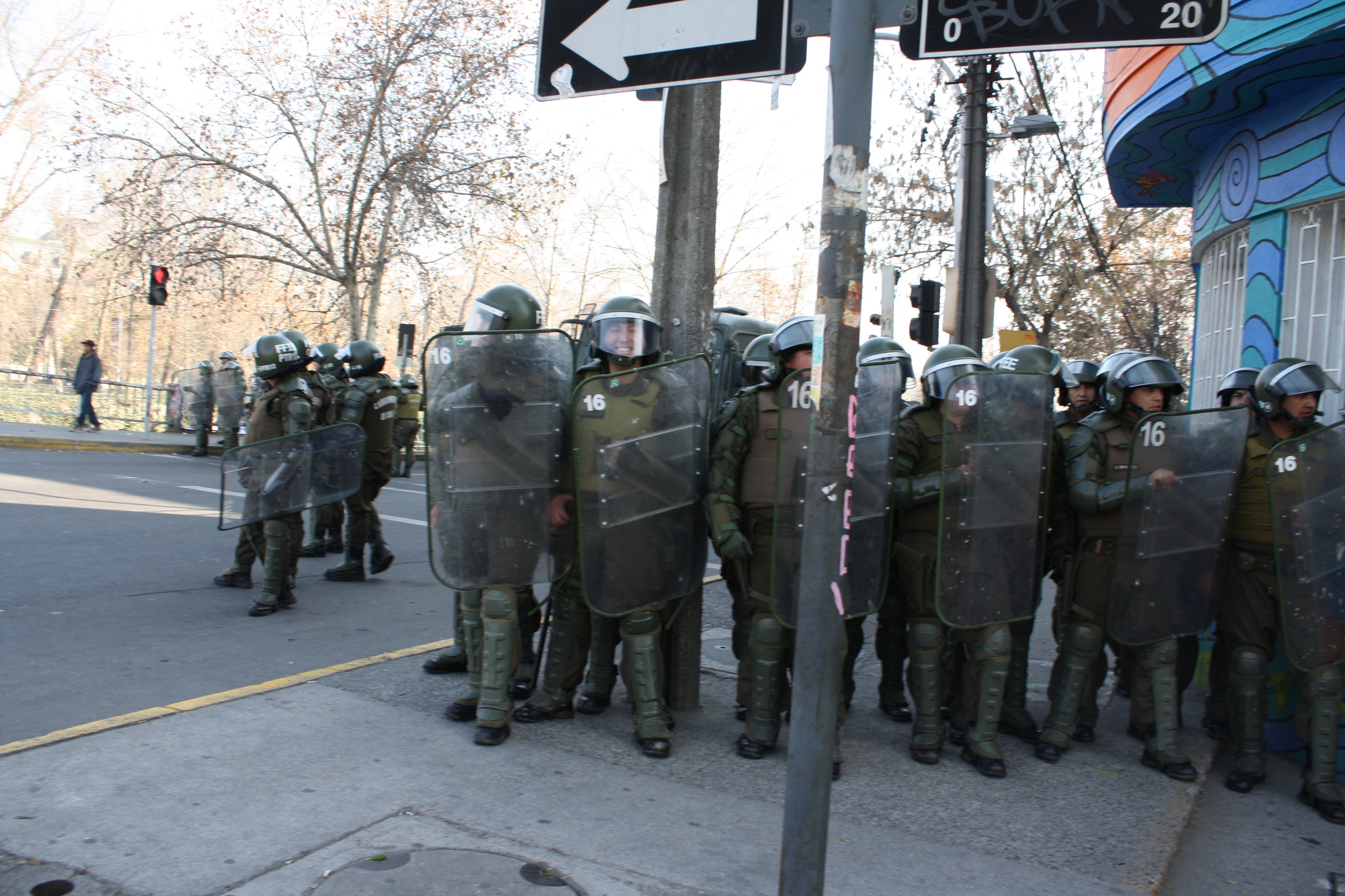
News
Cambridge Residents Slam Council Proposal to Delay Bike Lane Construction

News
‘Gender-Affirming Slay Fest’: Harvard College QSA Hosts Annual Queer Prom

News
‘Not Being Nerds’: Harvard Students Dance to Tinashe at Yardfest

News
Wrongful Death Trial Against CAMHS Employee Over 2015 Student Suicide To Begin Tuesday

News
Cornel West, Harvard Affiliates Call for University to Divest from ‘Israeli Apartheid’ at Rally
On Rioting

SANTIAGO, Chile - When it comes to protesting, Chilean students have us beat.
Where we’ll hold a vigil, they’ll start a riot. Where we’ll camp out on Harvard Yard, they’ll violently sack a university building.
This is a lesson I learned on Tuesday afternoon while covering a student march for an expat paper in Santiago. Organized by FECH, Universidad de Chile’s student union, these ‘marches’ feature thousands of protestors demanding dramatic reforms to the nation’s broken school system.
I put ‘march’ in quotation marks because the label incorrectly implies peace, order, and nonviolence. In reality, all sense of decorum is typically lost by 10:30 in the morning — about a half an hour after the demonstrations begin. A student will throw a rock at the carbinieros; the carbinieros, clad in riot gear, retaliate. The escalatory spiral continues, and soon no one can walk three blocks in the city’s central borough without skirting a flaming barricade or witnessing a violent confrontation with the law.
By 2 p.m that Tuesday — when I arrived at the corner of Avenidas Santa María and Loreta — the scene was surreal. That’s a cliché adjective, used nowadays to describe everything from tasty meals to pretty views. But this was one of those rare cases, in which the descriptor was completely appropriate.
Where there had been fruit vendors and outdoor cafés and children playing in the street the previous day, there was now a mass of students, trying to push past a police cordon. Punches were exchanged. A noise bomb was thrown to disperse the crowd.
In the middle of the pandemonium sat a black police tank, spraying a mixture of water and tear gas from a swiveling turret. Though it was easy enough to avoid a direct hit, just loitering near the fumes produced the feeling of pepper in the eyes and sandpaper on the skin.
A group of encapuchados, or masked anarchists, had taken advantage of the disorder. Unaffiliated with the students, their one goal is chaos — rubble fires set in the street, shattered windows, illicit graffiti, smashed up sidewalks.
In this atmosphere, it was easy to denounce the protestors. Many conservative politicians make a living doing so.
After all, the vendors whose properties were destroyed had no dog in this fight.
But it’s also easy to forget that the students are not the encapuchados — a distinction that Chile’s right attempts, with some success, to blur.
It’s easy to forget that the basic idea of meritocracy is at stake; whereas scholarships, endowments, and grants have brought a college education within reach of most students in the United States, the Pinochet-era relic of for-profit universities — a topic too complex to explain at length here — has made tertiary education the realm only of the rich in Chile.
Finally — and most importantly — it’s easy to forget that the protests have worked.
In the presidential debates in late June, all four candidates from the Concertación bloc — the dominant coalition in Chilean politics — pledged to wean the educational system from profit. The two more liberal contenders of the group want no one to pay out of pocket, while the more conservative candidates want the richest 30 percent to make a small contribution — perhaps not FECH’s dream, but not far off either.
These positions were considered fringe four years ago; now, they’re de rigeur for any serious presidential contender, and this is largely due to the attention the students have brought to the issue.
At Harvard, we can get riled up over a cause just like the Chilean students — whether it be mental health or divestment. Though the injustices we fight against are no longer as flagrant as those in Santiago, they’re flagrant enough to spark collective movements, some with popular support.
So I suppose in principle, our protests in similar. In practice, however, they’re anything but.
Whereas FECH protests cause both collateral damage and profound change, ours cause neither. Whereas, our movements fizzle out and eventually implode, FECH’s protest are explosive, sometimes quite literally.
I’m not sure either strategy is unqualifiedly better — both have their upsides and downsides. But if there’s one lesson that could be gleaned for our generation at Harvard — far removed from the anti-war movements of the ‘60s and ‘70s, and almost always willing to obey our administrators — it might be that the most effective activism is often performed not within the institutional framework, but in opposition to it.
Want to keep up with breaking news? Subscribe to our email newsletter.
